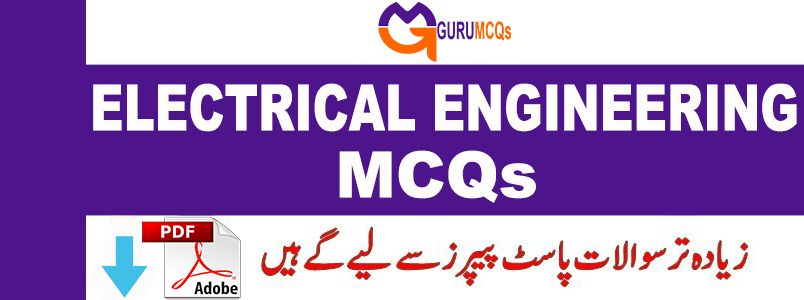
GURU MCQs provides Electrical Engineering MCQs for Job Test and Interview Preparation, suitable for fresh graduates, students, and competitive exams. Most repeated Electrical Engineering MCQs section is frequently encountered in CSS, PMS, Inspector, ASI, Sub-inspector, Constable, FPSC, PPSC, ETEA, FIA, Police, Army, Navy, Airforce, IB, MOFA, ASF, LHC, Educators, and various other competitive exams, as well as government and private job assessments. Electrical Engineering most repeated MCQs include Analog and Digital Communications, Control Systems, Power Electronics, Electric Circuits, Electric machines, Electrical measurement & units, Utilization of Electrical Energy, Basic Electrical Engineering, Electrical Installation, Power Systems, Testing & maintenance of electrical equipment’s – and much more.
11. Silicon controlled rectifier can be turned on____________?
A. By applying a gate pulse and turned off only when current becomes zero
B. And turned off by applying gate pulse
C. By applying a gate pulse and turned off by removing the gate pulse
D. By making current non zero and turned off by making current zero
12. Form factor of a rectifier is the ratio of ______________?
A. Root mean square value of voltage and current to its peak value
B. Root mean square value of voltage and current to its average value
C. Average value of current and voltage to its root mean square value
D. Peak value of current and voltage to its root mean square value
13. Ripple factor is the ratio of______________________?
A. Rms value of the ac component of load voltage to the dc voltage
B. Average value of the ac component of load voltage to the peak value of voltage
C. Average value of the dc component of load voltage to the ac voltage
D. Peak value of the dc component of load voltage to the ac voltage
14. In a square – wave operation of 3 phase CSIs, the power values are on for___________?
A. 60 degree
B. 90 degree
C. 120 degree
D. 150 degree
15. A carrier based PWM technique in CSI is composed of____________?
A. A switching pulse generator and a shorting pulse generator
B. A shorting pulse distributor
C. A switching and shorting pulse combination
D. All of these
16. Transformer utilization factor is a measure of the merit of a rectifier circuit. It is the ratio of_______________?
A. AC input power to the transformer volt – amp rating required by secondary
B. AC input power to the transformer volt – amp rating required by primary
C. DC output power to the transformer volt – amp rating required by secondary
D. DC output power to the transformer volt – amp rating required by primary
17. In a 3 phase half wave rectifier, when firing angle is less than 90 degree, then the average dc output voltage becomes__________________?
A. Positive
B. Negative
C. Zero
D. None of these
18. In variable frequency, PWM gain
A. Phase lead helps to increase the phase margin of the control loop
B. Phase lag helps to increase the phase margin of the control loop
C. Phase lead helps to decrease the phase margin of the control loop
D. Phase lag helps to decrease the phase margin of the control loop
19. If the firing angle becomes negative, then the rectifier begins to work as_______________?
A. A rectifier
B. An inverter
C. A chopper
D. A regulator
20. In constant frequency PWM, at perturbation the amplitude of the sinusoidal component is a___________?
A. Linear function
B. Non linear function
C. Constant function
D. None of these
